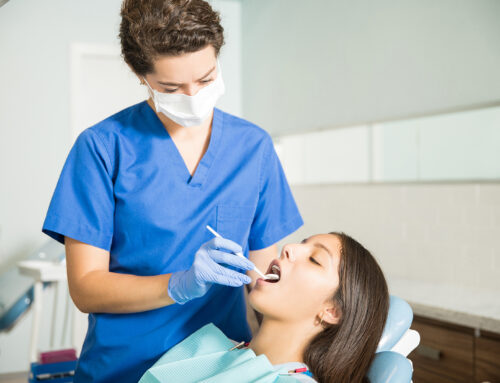Getting braces is almost a rite of passage. Not only do they help with improving a person’s appearance, but they also help to prevent tooth, gum, and jaw problems. While children make up the majority of orthodontic clients, adults account for 25 percent of this demographic. People of almost any age can get braces—children as young as age 7 and adults as old as 70 have received orthodontic treatment. With such a wide range of clients, the orthodontic industry has produced a number of options to suit clients.
Traditional Metal Braces
When we hear braces mentioned, we tend to think of traditional metal braces. These are connected by stainless steel brackets and wires and applied to your teeth with an adhesive. In the past, these braces were much larger and more noticeable. Thankfully, modern advances have reduced their size and produced heat-activated archwires that move teeth faster and more comfortably. Because metal braces are the most affordable, they are still the most common form of orthodontic treatment.
Clear Ceramic Braces
Are you interested in getting straight teeth, but dread the thought of a “metal mouth”? Well, now you have the option of getting clear braces. These braces look and function much like traditional metal braces, but they are much more invisible, which means they’re more aesthetically pleasing. Sometimes, you can even get tooth-colored wires to disguise your orthodontic treatment even more.
Lingual Braces
If you need braces, but you don’t want them showing at all, lingual braces might be an option. Lingual braces are metal braces and attach to the back of your teeth. While this is an attractive option to consider, it also tends to take longer than other braces. Lingual braces move the teeth much more slowly. Not all orthodontists offer this option, as additional training is required. Also, lingual braces are more difficult to adapt to—you may have increased difficulties talking, eating, or brushing your teeth, or may experience problems with tongue sores.
Invisalign
Invisalign has become known as the invisible treatment of choice for millions of adults. Instead of braces, Invisalign treatment consists of two sets of clear aligners that are specifically molded to fit over your teeth. These aligners can be removed for eating, drinking, or special events; however, they must be worn for 22 hours per day, which means that you can’t just wear them whenever you feel like wearing them. Invisalign is most suited for people that only need minor tooth adjustments.
Ultimately, orthodontic treatment is highly personalized. Your teeth and the shape of your mouth are unique and require the expert advice of an orthodontist. Your choices will also be influenced by your lifestyle choices and your financial options. Regardless which teeth-straightening option you end up with, you’ll be on your way to your dream of a straighter smile!






